Five Best Defense Techniques against Unexpected Attacks
In a world where unpredictability seems to lurk around every corner, understanding how to protect yourself during unexpected confrontations is more important than ever. This article explores effective defense techniques that not only enhance your personal safety but also boost your confidence in various situations. Whether you're walking alone at night, navigating crowded places, or simply want to feel more secure in your daily life, these strategies will empower you to stand your ground and react appropriately when faced with potential threats. So, let's dive into these essential techniques and arm ourselves with knowledge and skills that could make all the difference in a critical moment!
Understanding your surroundings is crucial for anticipating potential threats. Situational awareness involves being conscious of what’s happening around you and recognizing the cues that indicate danger. Imagine walking through a park; are you engrossed in your phone, or are you noticing the people around you? Developing and maintaining situational awareness means training yourself to identify risks before they escalate into dangerous situations. Start by regularly scanning your environment, noting exits, and observing the behavior of those nearby. This proactive approach can significantly enhance your safety.
Knowing how to diffuse a tense situation can prevent physical confrontation. Often, conflicts arise from misunderstandings or heated emotions. Here, we explore verbal and non-verbal strategies that can help calm aggressive individuals and avoid conflict. For instance, using a calm tone and open body language can signal your intention to communicate rather than confront. Engaging in active listening—where you genuinely acknowledge the other person's feelings—can also help to lower the temperature of a dispute. Remember, the goal is to create a dialogue, not a showdown.
Non-verbal communication plays a significant role in conflict resolution. Recognizing and employing key body language cues can be a game-changer when navigating confrontational scenarios. For instance, maintaining an open posture, where your arms are uncrossed and your hands are visible, can convey that you are approachable and not a threat. Additionally, mirroring the other person's body language subtly can help to create rapport, making them feel understood and less defensive.
Your physical stance can convey confidence or vulnerability. Adopting a posture that projects strength and readiness without appearing aggressive is essential. Stand tall, with your shoulders back and head held high; this not only makes you appear more confident but also influences how you feel internally. Think of it like a superhero stance—where you embody strength and resilience. This can deter potential aggressors who may think twice before approaching someone who exudes confidence.
Facial expressions can influence interactions significantly. Managing your expressions to convey calmness and assertiveness can be incredibly effective in challenging situations. A slight smile can disarm hostility, while maintaining a neutral expression can prevent escalation. When faced with aggression, practice keeping your face relaxed; this not only helps you stay composed but also encourages the other person to mirror your calmness.
Listening attentively can help de-escalate conflicts. Active listening is more than just hearing words; it involves engaging with the speaker and showing that you value their perspective. Techniques such as nodding, maintaining eye contact, and paraphrasing what the other person has said can foster understanding and reduce tensions during confrontations. By making the other person feel heard, you can often diffuse their anger and redirect the conversation toward a more constructive path.
Physical self-defense skills are essential for personal safety. It’s not just about knowing how to fight; it’s about understanding how to protect yourself effectively from physical attacks. Basic self-defense techniques can be learned by anyone and can make a significant difference in a threatening situation. Whether it’s a simple escape maneuver or a striking technique, having these skills in your back pocket can provide peace of mind.
Understanding how to strike effectively can deter an attacker. Simple yet powerful striking techniques, such as a palm strike or knee to the groin, can be effective in various situations. The key is to aim for vulnerable areas where you can cause the most impact with the least effort. Think of it as using your body’s natural weapons to create an opportunity for escape rather than engaging in a prolonged fight.
Knowing how to evade or block attacks is vital. Key defensive maneuvers, such as sidestepping or using your arms to shield yourself, can help you protect yourself while minimizing harm. Practice these techniques regularly, so they become second nature. Remember, the goal is not to win a fight but to create an opportunity to escape and seek help.
Having a plan in place can make all the difference during an unexpected attack. Creating an emergency response plan tailored to your individual needs and environments is essential. This means thinking ahead about potential scenarios and deciding how you would react. Would you run, hide, or call for help? Having these decisions made in advance can save precious seconds when it matters most.
Recognizing safe zones can provide refuge during an attack. Safe zones can be public places such as stores, police stations, or even the homes of friends. Familiarize yourself with your surroundings and identify these locations ahead of time. It’s like having an escape route mapped out in your mind, ready to be activated in a moment of crisis.
Effective communication with authorities can enhance safety. In emergencies, clarity is key. Practice conveying information clearly and quickly, focusing on the who, what, where, and when. Think of it as a mini-script you can rehearse, so when the time comes, you’re ready to communicate efficiently and effectively.
- What should I do if I feel threatened? Always trust your instincts. If you feel unsafe, try to remove yourself from the situation as quickly as possible.
- Are self-defense classes necessary? While not mandatory, self-defense classes can significantly boost your confidence and equip you with essential skills.
- How can I improve my situational awareness? Practice being mindful of your surroundings, and regularly assess your environment for potential risks.

Situational Awareness
Understanding your surroundings is more than just a skill; it's a vital life-saving technique that can make a significant difference in your safety. involves being conscious of what is happening around you, recognizing potential threats, and understanding how to react appropriately. Imagine walking into a crowded room; instead of just focusing on your friends, take a moment to observe the entire environment. Are there exits? Is anyone acting suspiciously? These observations can help you anticipate any issues before they escalate.
To develop and maintain situational awareness, you can adopt a few practical strategies. First, make it a habit to scan your environment regularly. This doesn’t mean you should be paranoid or overly cautious, but rather, it’s about being mindful and alert. You can do this by:
- Identifying potential hazards in your surroundings.
- Noticing the behavior of people around you.
- Being aware of your own emotional state and how it may affect your perception.
Additionally, practicing mindfulness can enhance your situational awareness. By focusing on the present moment, you can better notice subtle changes in your environment. Think of it like tuning a radio; when you adjust the dial just right, you can pick up on the faintest signals. Similarly, honing your awareness helps you pick up on cues that others might miss.
Another key aspect of situational awareness is understanding the context of your environment. Different situations require different levels of vigilance. For instance, walking through a busy market might demand a different level of attention than strolling through a quiet park. By assessing the context, you can gauge the likelihood of encountering a threat and adjust your awareness accordingly. Remember, your instincts are powerful; if something feels off, it probably is.
Incorporating situational awareness into your daily life doesn’t have to be overwhelming. Start small—practice being more observant during your daily routines. Whether you're commuting, shopping, or simply walking your dog, take a moment to notice your surroundings. Over time, this practice will become second nature, allowing you to react swiftly and effectively in unexpected situations.
Ultimately, cultivating situational awareness is about empowering yourself. It’s not just about avoiding danger; it’s about feeling confident and in control of your environment. So, the next time you step out, remember to keep your head up and your senses sharp. You never know when that extra awareness might just save your day.
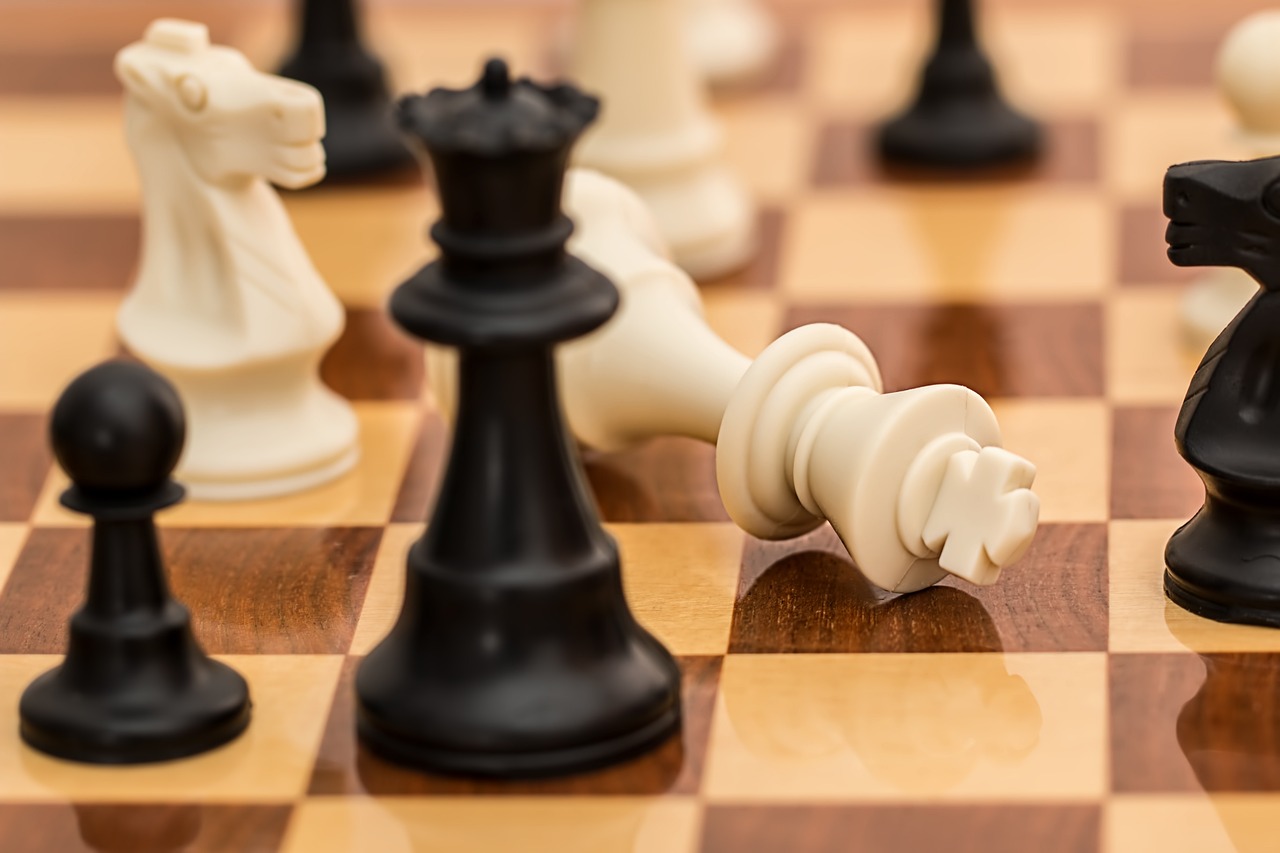
De-escalation Techniques
When it comes to unexpected confrontations, knowing how to de-escalate a tense situation can be your best defense. Imagine walking into a room where the atmosphere is thick with tension, and you can almost cut it with a knife. Instead of letting the situation spiral out of control, you can step in with some effective de-escalation techniques that not only calm the storm but also help you maintain your personal safety. These strategies are crucial for anyone, whether you're a professional in a high-stress job or just someone navigating daily life.
One of the most powerful tools in your arsenal is your ability to communicate. Verbal and non-verbal strategies can work wonders in diffusing aggression. For instance, using a calm and steady voice can instantly lower the emotional temperature of a conversation. Think of it as pouring a glass of cold water on a fire; it can help douse the flames before they engulf everything. Additionally, your body language plays a significant role in how your message is received. Keeping your hands visible and your posture relaxed can signal that you are not a threat, which can make the other person feel safer.
In the realm of , it's essential to recognize certain body language cues. These cues can indicate whether someone is becoming more agitated or if they are starting to calm down. For example, crossed arms may suggest defensiveness, while an open stance can indicate receptiveness. By being aware of these signals, you can adjust your approach accordingly. If you notice that the other person is starting to relax, you can gradually introduce more assertive communication, reinforcing that you are there to listen and help resolve the issue.
To effectively navigate confrontational scenarios, mastering body language cues is vital. Here are some key cues to keep in mind:
- Posture: Stand tall but relaxed. A strong posture can convey confidence, while a slouched posture may signal submission or fear.
- Eye Contact: Maintain appropriate eye contact to show you are engaged, but avoid staring, which can be perceived as a threat.
- Facial Expressions: A soft, neutral expression can help convey calmness and understanding.
Your physical stance can make a world of difference in how others perceive you. Adopting a posture that projects strength without appearing aggressive is a fine balance. For instance, keeping your feet shoulder-width apart and your hands relaxed at your sides can create an impression of readiness without hostility. Think of it like standing your ground in the face of a storm; you want to be steady and unyielding, yet approachable.
Facial expressions can significantly influence interactions. A slight smile can go a long way in easing tension, while a furrowed brow can escalate it. Managing your expressions to convey calmness and assertiveness is crucial. Imagine you're a lighthouse guiding a ship through a storm; your calm demeanor can help steer the situation away from rocky waters.
Another critical aspect of de-escalation is the art of active listening. When someone feels heard, they are less likely to escalate their emotions. Techniques for active listening include nodding to show understanding, repeating back what the other person has said to confirm comprehension, and asking open-ended questions that encourage dialogue. This not only fosters understanding but also helps reduce tensions. Think of it as building a bridge over troubled waters; the more you connect, the smoother the passage becomes.
In conclusion, mastering de-escalation techniques is not just about avoiding physical confrontations; it's about enhancing your overall personal safety and confidence. By honing your communication skills, being aware of body language, and practicing active listening, you can turn potentially volatile situations into opportunities for resolution. It's like having a secret weapon in your pocket—one that can help you navigate the unpredictable nature of human interactions with grace and poise.
Q: What should I do if someone is becoming aggressive towards me?
A: Remain calm, use a steady tone of voice, and employ de-escalation techniques such as active listening and non-threatening body language.
Q: How can I improve my situational awareness?
A: Practice being mindful of your surroundings, observe people's body language, and stay alert to changes in your environment.
Q: Are de-escalation techniques effective in all situations?
A: While they can be very effective, every situation is unique. Always prioritize your safety and be prepared to remove yourself if necessary.

Body Language Cues
When it comes to navigating confrontational scenarios, can be your secret weapon. Imagine walking into a room where tension hangs thick in the air. You can almost feel the electricity, right? This is where understanding and utilizing body language becomes crucial. It’s not just about what you say; it’s about how you say it, and even more importantly, how you present yourself.
First off, let’s talk about the importance of eye contact. Making direct eye contact can convey confidence and assertiveness. However, too much can come off as aggressive. It’s a delicate balance. Think of it like a dance—too rigid, and you’ll step on toes; too loose, and you’ll lose your partner. A steady gaze, combined with occasional breaks, can help you maintain a friendly yet assertive demeanor.
Next up, your posture. Stand tall, shoulders back, and keep your chin up. This stance not only projects confidence but also makes you appear less vulnerable. If you slouch or hunch over, you might inadvertently signal to others that you’re unsure or intimidated. Picture a lion—when it walks through the savannah, it doesn’t cower; it stands proud, commanding respect from other animals. You want to embody that same energy.
Additionally, your facial expressions play a significant role in how your message is received. A calm, relaxed face can help ease tensions, while a furrowed brow or tight lips might escalate a situation. It’s essential to manage your expressions consciously. Think of your face as a canvas—what kind of painting do you want to present to the world? A serene landscape or a stormy sky? The choice is yours.
Another crucial aspect is understanding the body language of others. Are they crossing their arms? Avoiding eye contact? These cues can signal discomfort or defensiveness. By recognizing these signs, you can adjust your approach accordingly. For instance, if someone appears closed off, you might want to soften your stance or use open gestures to invite dialogue. Just like a skilled negotiator, you can shift the atmosphere by being attuned to the unspoken words around you.
To wrap it up, mastering body language cues is not just about protecting yourself; it's about communicating effectively in any situation. By being mindful of your own body language and keenly observing others, you can navigate tense situations with grace and confidence. Remember, it’s all about projecting strength without aggression, calmness without submission, and understanding without judgment.
- What is the most important body language cue to convey confidence?
Maintaining an upright posture and making steady eye contact are crucial for projecting confidence. - How can I improve my body language awareness?
Practice observing others in various situations and reflect on your own body language during conversations. - Can body language really change the outcome of a confrontation?
Absolutely! Effective body language can de-escalate tensions and foster better communication.
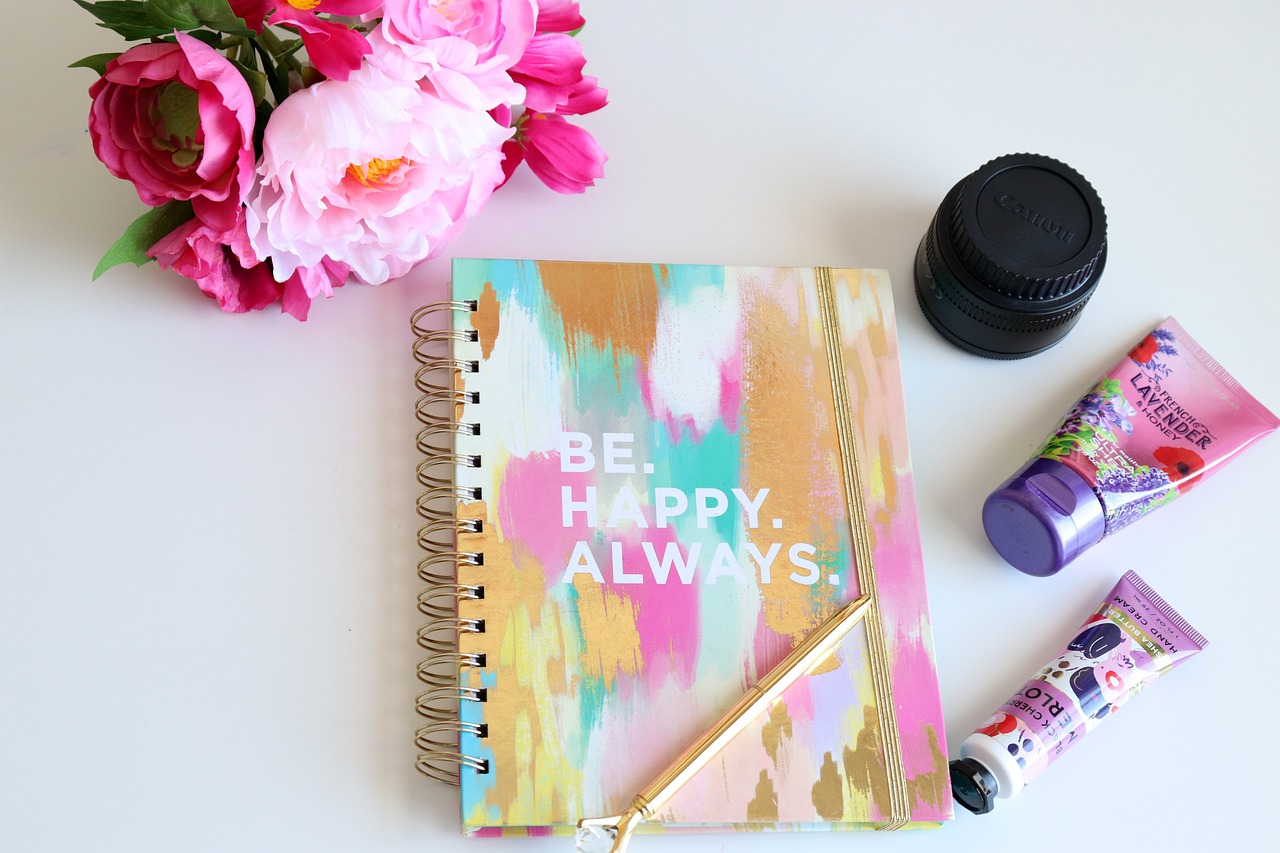
Posture and Stance
When it comes to personal safety, your can make a world of difference. Imagine walking into a room and instantly commanding attention just by the way you carry yourself. That's the power of a strong posture! It not only influences how others perceive you but also affects your own confidence levels. When you stand tall with your shoulders back, you project an air of confidence and readiness, which can deter potential aggressors before any confrontation even begins.
So, how do you achieve this commanding presence? First, consider your feet positioning. Stand with your feet shoulder-width apart; this creates a stable base that allows for quick movement if necessary. Your weight should be evenly distributed, making you less likely to be easily pushed or knocked off balance. Imagine being a tree with deep roots—firm and unyielding against the winds of uncertainty.
Next, let’s talk about your shoulders and arms. Keep your shoulders relaxed but not slouched. A tense posture can signal vulnerability, while relaxed shoulders convey that you are in control. Your arms should be at your sides or slightly bent, ready to react if the situation escalates. If your arms are crossed, it might appear as if you're closed off or defensive, which can invite further aggression. Instead, think of your arms as open gates, ready to defend but also to communicate.
Lastly, don’t forget about your head and gaze. Keep your head up and your gaze steady. Making eye contact can be a powerful deterrent. It shows that you are aware and engaged, and it signals to others that you are not an easy target. If someone approaches you aggressively, maintaining eye contact can help you assess their intentions and respond appropriately.
In summary, your posture and stance are not just about looking tough; they are about exuding a sense of calm and control. By mastering these elements, you not only prepare yourself for potential confrontations but also enhance your overall confidence in everyday situations. Remember, a confident stance can often speak louder than words, and it’s your first line of defense against unexpected attacks.
- How can I practice improving my posture?
Regularly check in with your posture throughout the day. Consider exercises that strengthen your core and back muscles, such as yoga or pilates. - What should I do if I feel threatened?
Trust your instincts. If you feel unsafe, try to remove yourself from the situation and seek help if necessary. - Can posture really deter an attacker?
Yes! A confident posture can signal to potential aggressors that you're not an easy target, which may discourage them from pursuing confrontation. - Is it too late to change my posture?
Not at all! With consistent practice and mindfulness, anyone can improve their posture and stance over time.
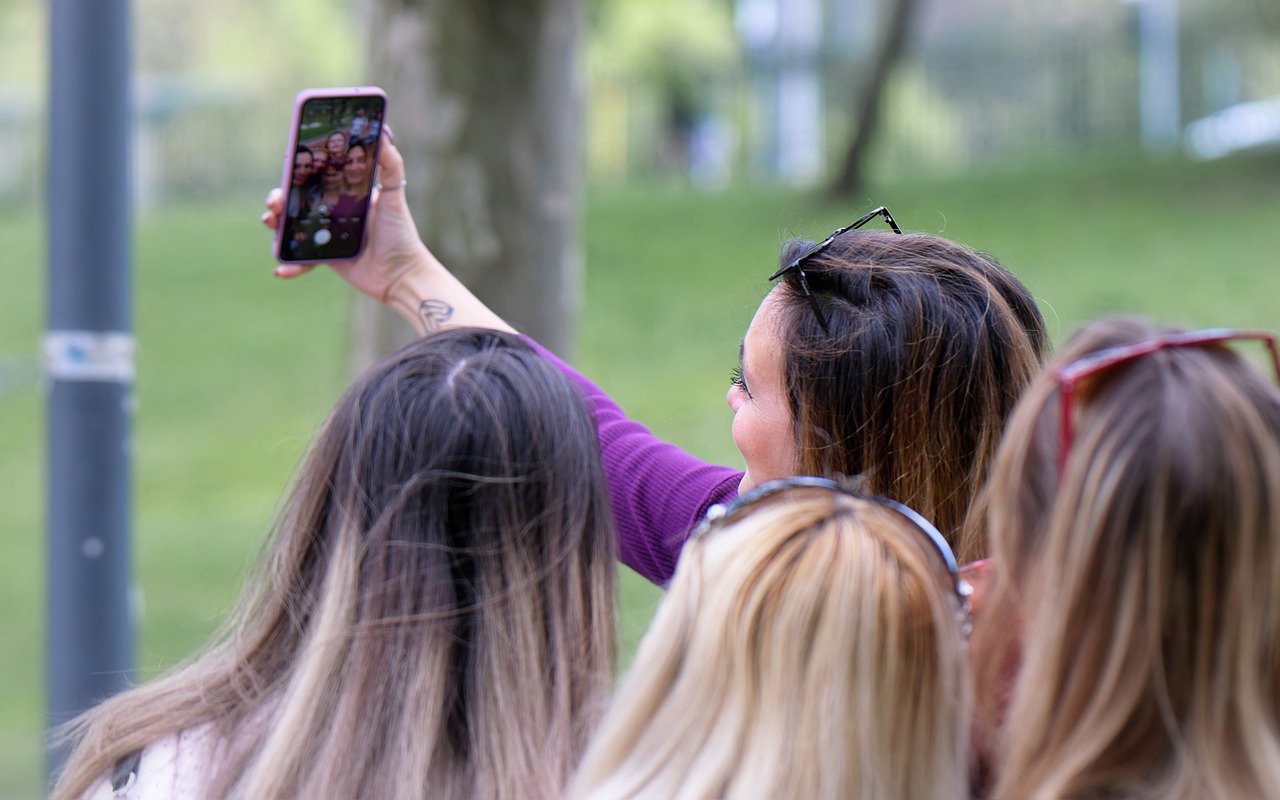
Facial Expressions
Facial expressions are like the silent language of our emotions; they can speak volumes without uttering a single word. In confrontational situations, mastering your facial expressions can be a game-changer. Imagine walking into a tense scenario with a calm and composed face, instantly diffusing the potential for conflict. This is the power of facial expressions! They can either escalate a situation or serve as a shield against aggression.
When faced with an aggressive individual, your facial expressions can either signal fear or convey confidence. A relaxed face, with a slight smile, can often disarm an angry person, making them feel less threatened. Conversely, a furrowed brow or tight lips might escalate tensions, making you appear defensive or hostile. It’s essential to practice maintaining a neutral or positive expression, even in the heat of the moment. This not only helps you stay calm but can also influence the other person’s emotional state.
Here are some key facial expressions to consider:
- Neutral Expression: Keeping a relaxed face can prevent misunderstandings. It shows that you are not a threat.
- Soft Smile: A gentle smile can convey friendliness and openness, potentially easing the other person’s aggression.
- Raised Eyebrows: This can indicate surprise or concern, showing that you are engaged and attentive.
- Direct Eye Contact: Maintaining eye contact can project confidence and assertiveness, but be careful not to stare aggressively.
Moreover, it’s vital to be aware of the other person’s facial expressions as well. Reading their emotions can provide insights into their state of mind and intentions. For instance, if you notice clenched jaws or narrowed eyes, it might indicate heightened aggression. Recognizing these cues can help you adapt your approach and possibly redirect the conversation towards a more peaceful resolution.
In summary, your facial expressions are powerful tools in managing confrontational situations. By consciously controlling how you present your emotions, you can not only protect yourself but also create an environment that encourages understanding and calmness. Remember, in the dance of conflict, your face is one of the most expressive partners!
Q: How can I practice my facial expressions for conflict situations?
A: You can practice in front of a mirror, experimenting with different expressions to see how they feel and look. Role-playing with a friend can also help you gain confidence.
Q: What if I struggle to control my facial expressions?
A: It's completely normal! Start by focusing on your breathing. Deep breaths can help you relax, making it easier to manage your expressions. Over time, with practice, you'll find it becomes more natural.
Q: Are there specific expressions to avoid in confrontational settings?
A: Yes, avoid expressions that convey anger, disgust, or fear, such as frowning, glaring, or showing your teeth in a tense manner. These can escalate the situation.

Active Listening Skills
When it comes to navigating confrontational situations, active listening is a game-changer. It’s not just about hearing words; it’s about truly understanding the emotions and intentions behind them. Imagine you’re in a heated discussion, and instead of jumping to conclusions or preparing your rebuttal, you take a moment to really listen. This approach can significantly lower tension and create a pathway for resolution. So, how do you master the art of active listening? Here are some essential techniques:
First off, maintain eye contact. This simple act shows the other person that you are genuinely engaged in the conversation. It’s like a silent agreement that you value their words. Additionally, nodding occasionally can reinforce your attentiveness, making them feel heard and respected. But remember, it's not just about the physical cues; your mental state is equally important. Clear your mind of distractions and focus solely on the speaker. Think of it as tuning into a radio station—if you’re busy adjusting the dial, you might miss the music!
Another important aspect is to reflect back what you hear. This doesn’t mean repeating everything verbatim but rather summarizing their points to show that you understand. For instance, you might say, “So what I’m hearing is that you feel frustrated because…” This technique not only clarifies their message but also demonstrates that you’re invested in the conversation. It’s a bit like being a mirror, reflecting their feelings and thoughts back to them, which can be incredibly validating.
Moreover, ask open-ended questions to encourage deeper dialogue. Instead of yes or no questions, try something like, “Can you tell me more about why you feel that way?” This invites the other person to share more, giving you greater insight into their perspective. It’s like peeling an onion—each layer reveals more depth and understanding, helping you navigate the situation with greater empathy.
Lastly, be aware of your own emotions. Sometimes, when faced with aggression or frustration, it’s easy to let our feelings take over. However, managing your emotional response is crucial. Take a deep breath and remind yourself that the goal is to resolve, not escalate. Think of it as being a calm captain steering a ship through a storm; your steadiness can influence the entire atmosphere of the conversation.
In conclusion, active listening is a powerful tool that can transform confrontational situations into opportunities for understanding and peace. By engaging fully, reflecting back, asking insightful questions, and managing your emotions, you can navigate conflicts with confidence and grace. Remember, the more you practice these skills, the more adept you’ll become at diffusing tension and fostering respectful dialogue.
- What is active listening? Active listening is the practice of fully concentrating, understanding, responding, and remembering what is being said in a conversation.
- Why is active listening important in conflict resolution? It helps to reduce misunderstandings, fosters trust, and creates an environment conducive to open communication.
- Can active listening be learned? Yes, like any skill, active listening can be developed with practice and commitment.
- How can I practice active listening? You can practice by engaging in conversations where you focus solely on the speaker, reflecting their words, and asking open-ended questions.

Self-Defense Techniques
When it comes to personal safety, understanding is not just beneficial; it's essential. In a world where unexpected confrontations can occur at any moment, having the ability to protect oneself can significantly boost your confidence and sense of security. Imagine walking down a quiet street at night, and suddenly, you feel someone approach you with ill intentions. What do you do? This is where self-defense techniques come into play, offering you the tools to respond effectively and assertively.
One of the most important aspects of self-defense is knowing basic physical techniques that anyone can learn. It's not about being a martial arts expert but rather about equipping yourself with the knowledge to defend against potential threats. These techniques often focus on using your body effectively, leveraging your strength against an assailant, and creating opportunities to escape. For instance, understanding how to strike effectively can deter an attacker. Simple yet powerful striking techniques such as a palm heel strike, knee strike, or elbow strike can be incredibly effective. These strikes target vulnerable areas of the attacker's body, maximizing your impact while minimizing your effort.
But striking is just one part of the equation. Equally important are defensive maneuvers that allow you to evade or block attacks. Knowing how to sidestep an incoming blow or use your arms to deflect an attack can buy you precious seconds to escape. For example, if someone attempts to grab you, a quick pivot and a strong, downward elbow strike to their arm can break their grip and give you a chance to flee. Remember, the goal of self-defense is not to engage in a fight but to create an opportunity to escape to safety.
To effectively learn these techniques, consider enrolling in a self-defense class. Many local community centers and martial arts studios offer classes tailored for beginners. These classes not only teach you physical techniques but also help you develop the right mindset for self-defense. You’ll learn how to stay calm under pressure, assess situations quickly, and respond appropriately. Moreover, practicing these techniques with a partner can help you gain confidence and improve your reflexes.
In addition to physical techniques, mental preparation plays a crucial role in self-defense. It’s about being aware of your surroundings and trusting your instincts. If something feels off, it probably is. Developing a mindset that prioritizes safety can empower you to make better decisions in potentially dangerous situations. This includes knowing when to avoid confrontation altogether and how to seek help if needed.
In conclusion, self-defense techniques encompass a combination of physical skills, mental preparedness, and situational awareness. By investing time in learning and practicing these techniques, you can equip yourself with the confidence and ability to protect yourself in unexpected situations. Remember, the best defense is often avoiding a confrontation in the first place, but being prepared can make all the difference when it's necessary.
- What is the best self-defense technique for beginners? Simple striking techniques like palm heel strikes and knee strikes are effective and easy to learn.
- Do I need to be strong to defend myself? No, self-defense techniques often rely on technique and leverage rather than brute strength.
- How can I improve my situational awareness? Practice being mindful of your surroundings, and trust your instincts; if something feels wrong, it probably is.
- Are self-defense classes worth it? Absolutely! They provide valuable skills, boost confidence, and teach you how to respond in various situations.

Striking Techniques
When it comes to self-defense, understanding effective can be a game-changer. Imagine finding yourself in a situation where an attacker approaches you with ill intentions. The ability to strike back confidently not only deters the assailant but also empowers you to regain control. Striking techniques are not just about brute force; they are about precision, timing, and knowing where to hit. This section will explore some essential striking techniques that anyone can learn, regardless of their physical strength or experience.
First and foremost, it's crucial to understand that a well-placed strike can be more effective than a powerful one. For instance, targeting vulnerable areas of the body can incapacitate an attacker quickly. These areas include:
- The eyes: A quick jab or poke can momentarily blind an attacker.
- The nose: A swift strike can cause immense pain and disorientation.
- The throat: A targeted hit can obstruct breathing temporarily.
- The groin: This is a classic target that can stop an attacker in their tracks.
Now, let’s break down a few fundamental striking techniques that are easy to learn and can be practiced safely:
- Jab: This quick punch is delivered with your lead hand. It’s perfect for creating distance between you and an attacker.
- Cross: A powerful punch thrown with your rear hand, aimed directly at the attacker. This technique requires good body mechanics for maximum impact.
- Elbow Strike: When in close quarters, using your elbow can be devastating. Aim for the attacker’s head or body for an effective strike.
- Knee Strike: If the attacker is close enough, driving your knee into their groin or abdomen can be a highly effective technique.
Practicing these techniques regularly can build muscle memory, making it easier to react instinctively in a high-pressure situation. Consider joining a self-defense class or martial arts dojo to refine your skills further. Not only will you learn how to strike effectively, but you will also gain valuable insights into timing, distance, and how to read your opponent's movements.
Additionally, remember that striking should always be a last resort. The goal of self-defense is not to engage in a fight but to escape and ensure your safety. However, if you find yourself in a situation where you need to defend yourself, having these striking techniques in your arsenal can make all the difference.
In summary, mastering striking techniques is about more than just throwing punches. It's about understanding the mechanics of your body, the anatomy of your opponent, and the psychology of conflict. With practice and awareness, you can turn the tables in an unexpected confrontation and protect yourself effectively.
Q1: Do I need to be physically strong to effectively use striking techniques?
A: Not at all! Striking techniques rely more on precision and timing than sheer strength. By targeting vulnerable areas, even a smaller person can effectively defend themselves.
Q2: How can I practice these techniques safely?
A: It's best to practice with a partner in a controlled environment, such as a self-defense class. Make sure to use proper pads and protective gear to avoid injuries.
Q3: What if I don’t have any prior experience in self-defense?
A: Everyone starts somewhere! Many self-defense classes cater to beginners. The key is to stay committed and practice regularly.
Q4: Are there legal implications for using striking techniques in self-defense?
A: Yes, laws vary by location. It's essential to understand the self-defense laws in your area. Generally, self-defense should be proportional to the threat faced.
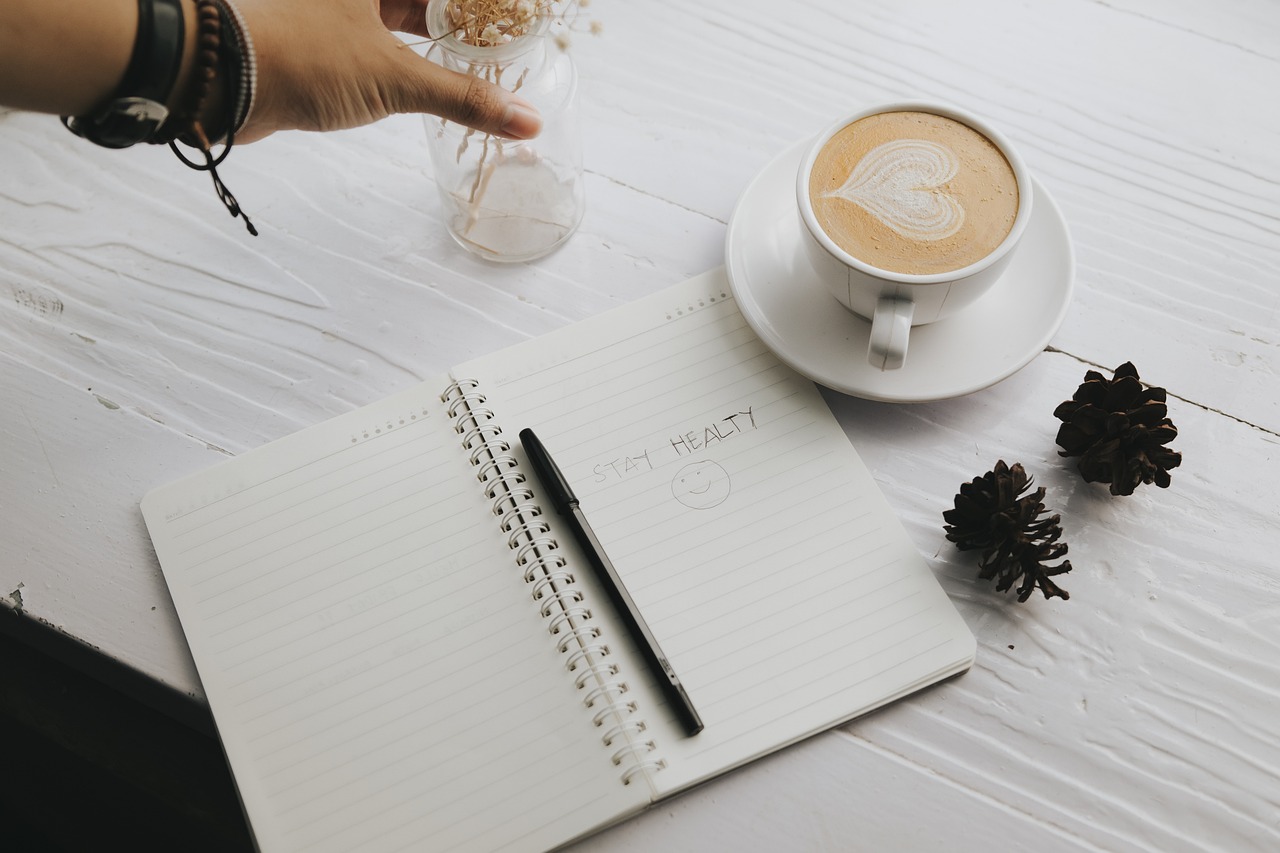
Defensive Maneuvers
When it comes to personal safety, knowing how to effectively protect yourself is crucial. Defensive maneuvers are essential skills that can help you evade or block an attack, allowing you to escape dangerous situations unharmed. Imagine being in a crowded place and suddenly feeling threatened; your ability to respond quickly can be the difference between safety and harm. These maneuvers are not just about physical strength; they require awareness, agility, and a calm mindset.
One of the fundamental defensive maneuvers is the block. This technique involves using your arms or hands to shield yourself from incoming strikes. It's important to practice the correct form to ensure maximum protection while minimizing the risk of injury. For instance, if someone swings a punch at you, a well-timed block can redirect the force away from your body. Think of blocking as a shield that absorbs the impact, allowing you to maintain your composure and prepare for your next move.
Another vital maneuver is the evade. This technique focuses on moving out of the way of an attack rather than absorbing the impact. Picture yourself as a matador, gracefully sidestepping a bull. When an attacker lunges at you, a quick step to the side can create the necessary distance to avoid harm. This not only keeps you safe but also puts you in a better position to respond or escape. Remember, evasion is about timing and agility; practice makes perfect.
In addition to blocking and evading, counter-attacks can also be a part of your defensive strategy. Once you've successfully evaded an attack, you may find an opening to strike back. This doesn't mean you should engage in a fight; rather, it’s about creating an opportunity to escape. A swift, focused counter can distract the attacker long enough for you to flee to safety. Think of it as a chess game; sometimes, the best move is to sacrifice a piece to protect your king.
To effectively implement these defensive maneuvers, consider practicing them regularly. Training in a safe environment, such as a martial arts class, can help you build muscle memory and confidence. It's also beneficial to visualize different scenarios where you might need these skills. This mental rehearsal can prepare you for real-life situations, making your responses more instinctive. Remember, the goal of these maneuvers is not to engage in violence but to ensure your safety and well-being.
In summary, mastering defensive maneuvers involves a blend of awareness, technique, and practice. By incorporating blocking, evading, and counter-attacking into your personal safety toolkit, you enhance your ability to protect yourself during unexpected confrontations. Stay alert, stay prepared, and always prioritize your safety above all else.
- What are defensive maneuvers? Defensive maneuvers are techniques used to protect oneself from physical attacks, including blocking, evading, and counter-attacking.
- How can I learn defensive maneuvers? You can learn defensive maneuvers through martial arts classes, self-defense workshops, or online tutorials that focus on practical techniques.
- Are defensive maneuvers only for physical confrontations? While primarily aimed at physical confrontations, these maneuvers also enhance your overall awareness and confidence in various situations.
- Can I practice defensive maneuvers alone? Yes, many techniques can be practiced solo, but it’s beneficial to train with a partner or instructor to ensure proper form and effectiveness.
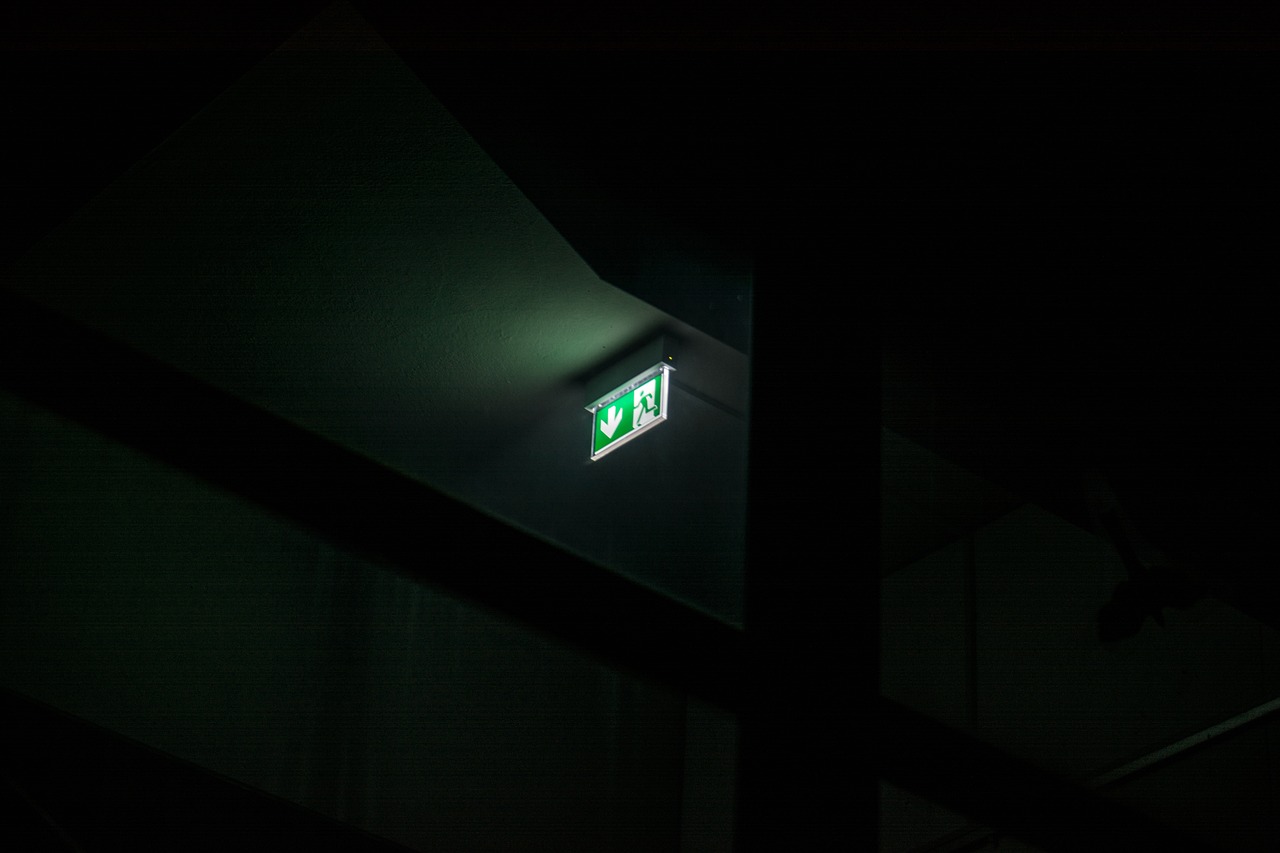
Emergency Response Planning
When it comes to unexpected attacks, having a solid emergency response plan can mean the difference between safety and chaos. Imagine walking through a park when suddenly, you sense something off. Your heart races, and your mind races faster. What do you do? This is where a well-thought-out plan comes into play. It’s not just about knowing how to react; it’s about anticipating potential threats and preparing yourself to face them head-on.
First and foremost, it's essential to assess your environment. Identify areas that could serve as safe havens during an emergency. These might include places like stores, community centers, or even well-lit public spaces. By knowing where these safe zones are, you can quickly direct yourself or others to safety if a situation arises. For instance, if you’re at a mall and feel threatened, knowing that the security office is just a few steps away can provide a sense of reassurance.
Next, consider creating a personalized emergency response plan that includes the following components:
- Escape Routes: Plan your escape routes in advance. Identify multiple exits in any area you frequent, whether it's your workplace, a gym, or your neighborhood.
- Emergency Contacts: Maintain a list of emergency contacts, including family members, friends, and local authorities. Ensure that everyone in your household knows how to reach these contacts.
- Communication Tools: Consider how you will communicate during an emergency. Will you use your phone, or is there a designated meeting point if phone lines are down?
Moreover, practicing your emergency response plan can significantly enhance your confidence and readiness. Conduct drills with your family or friends, simulating various scenarios that could occur. This practice not only helps you remember the steps but also allows you to identify any gaps in your plan. Think of it as a rehearsal for the unexpected; the more you practice, the more prepared you’ll be.
Lastly, don’t forget to stay informed about your local area. Keep up with news and updates regarding crime rates, community alerts, and safety tips. Many communities have apps or websites dedicated to public safety that can provide real-time information. Knowledge is power, and being aware of your surroundings can help you make informed decisions when it matters most.
Q: What should I do if I feel threatened?
A: Trust your instincts. If you feel threatened, seek a safe location immediately and contact authorities if possible.
Q: How can I practice my emergency response plan?
A: Conduct drills with friends or family, role-playing different scenarios to ensure everyone knows what to do.
Q: What are safe zones?
A: Safe zones are locations where you can seek refuge during an emergency, such as public buildings, stores, or well-populated areas.

Identifying Safe Zones
When faced with an unexpected attack, knowing how to identify safe zones can be a game-changer. These are places where you can seek refuge, gather your thoughts, and plan your next steps without the immediate threat of danger. Think of safe zones as your personal havens, whether they are physical locations or mental states that provide a sense of security. But how do you pinpoint these areas in your everyday life? Let's break it down.
First off, it's crucial to recognize that safe zones can vary from person to person, depending on their environment and circumstances. For some, a nearby store or café might serve as a sanctuary, while for others, it could be a friend's house or even a public space like a library. The key is to familiarize yourself with these locations before a crisis occurs. This proactive approach can make all the difference when adrenaline is pumping and time is of the essence.
Here are a few tips to help you identify potential safe zones:
- Familiarity: Choose places you know well. Familiarity breeds confidence, and you’ll be able to navigate these areas quickly if needed.
- Visibility: Look for areas that are well-lit and populated. The more people around, the less likely an attacker will engage.
- Accessibility: Ensure that these safe zones are easily accessible from your usual routes. You don’t want to waste precious seconds trying to remember how to get there.
Moreover, consider the layout of your surroundings. If you’re in a public space, identify exits and entrances, as well as any potential hiding spots or places to barricade yourself if necessary. This mental mapping can be incredibly beneficial. For example, if you're in a mall, knowing where the security office is located or where the nearest exit is can provide you with options during a crisis.
Additionally, it’s important to have a plan for communicating with others about your designated safe zones. Share this information with trusted friends or family members. This way, if you ever find yourself in a precarious situation, they’ll know where to look for you or how to assist you. You might even consider creating a simple emergency contact list that includes these safe zones, their addresses, and any relevant details. This list can be kept in your wallet or saved on your phone for easy access.
In summary, identifying safe zones involves a mix of awareness, planning, and communication. By taking the time to recognize and familiarize yourself with these areas, you can significantly enhance your personal safety and confidence. Remember, when it comes to safety, being prepared is half the battle won!
Q1: What should I do if I can't find a safe zone during an attack?
A1: If you can't find a safe zone, try to stay calm and assess your surroundings. Look for any potential escape routes or areas where you can blend in with a crowd. Remember, your priority should be to distance yourself from the threat.
Q2: How can I make my home a safe zone?
A2: To make your home a safe zone, ensure all entry points are secure, install good lighting, and consider a security system. Familiarize yourself with escape routes and designate a room where you can go in case of an emergency.
Q3: Can safe zones be temporary?
A3: Absolutely! Safe zones can be temporary spaces that provide immediate refuge. For example, a friend's house or a public building can serve as a safe zone during a crisis.

Communication Strategies
When faced with an unexpected attack, the way you communicate can be a game-changer. Effective communication strategies are not just about what you say, but also how you say it. The goal is to convey your message clearly and assertively, ensuring that you are understood while also maintaining a level of calm that can help de-escalate the situation. One of the first things to remember is to stay calm. When you remain composed, your voice naturally reflects that steadiness, which can have a calming effect on others involved in the confrontation. Think of your voice as a calming river flowing through a turbulent landscape; it can help soothe the chaos around you.
Another important aspect is to use clear and concise language. Avoid jargon or complex phrases that might confuse the other person. Instead, opt for simple, direct statements. For example, instead of saying, "I would appreciate it if you could lower your voice," you might say, "Please lower your voice." This straightforward approach reduces the chance for misinterpretation and conveys your message effectively.
Additionally, being aware of your tone and volume is crucial. If you speak too softly, it might come off as a lack of confidence, while speaking too loudly could escalate the tension. Aim for a balanced tone that is firm yet respectful. Consider your body language as well; maintaining an open posture and making appropriate eye contact can reinforce your message. It’s like painting a picture with words and actions that together create a clear image of your intent.
In emergencies, time is of the essence. Thus, having a few key phrases ready can be beneficial. Here are some examples of effective communication strategies you can use:
- “I need help!” - A direct call for assistance can alert those nearby that something is wrong.
- “Stay back!” - This command sets a clear boundary and can deter an aggressor.
- “Let’s talk about this.” - This phrase can help shift the focus from confrontation to dialogue.
Finally, don’t underestimate the power of non-verbal communication. Your body language, facial expressions, and even your breathing can convey messages just as strongly as words. For instance, if you are breathing steadily and maintaining a confident posture, it sends a signal to the other person that you are not intimidated. Think of it like a silent dance where your movements speak volumes, often more than your words ever could.
In summary, effective communication strategies during unexpected attacks involve a blend of calmness, clarity, and strong body language. By mastering these techniques, you can significantly increase your chances of diffusing a tense situation and ensuring your safety.
- What should I do if I feel threatened? - Trust your instincts. If you feel threatened, seek safety and call for help if necessary.
- How can I practice my communication skills? - Role-playing scenarios with friends or family can help you become more comfortable with assertive communication.
- Is it essential to learn self-defense techniques? - While not mandatory, understanding self-defense can boost your confidence and provide you with options in dangerous situations.
Frequently Asked Questions
- What is situational awareness and why is it important?
Situational awareness is the ability to perceive, understand, and anticipate your surroundings. It's crucial because it helps you identify potential threats before they escalate into dangerous situations. By being aware of what's happening around you, you can make informed decisions and take proactive measures to protect yourself.
- How can I effectively de-escalate a confrontation?
De-escalation involves using both verbal and non-verbal techniques to calm aggressive individuals. This can include maintaining a calm tone, using open body language, and actively listening to what the other person is saying. The goal is to diffuse tension and avoid physical confrontation, which can be achieved by showing empathy and understanding.
- What are some key body language cues to recognize during a confrontation?
Key body language cues include crossed arms (which may indicate defensiveness), a lack of eye contact (suggesting discomfort), and aggressive postures (like leaning forward). Recognizing these cues can help you gauge the other person's emotional state and respond appropriately to either de-escalate or prepare for a potential conflict.
- What basic self-defense techniques should everyone know?
Basic self-defense techniques include striking techniques like punches and kicks, as well as defensive maneuvers such as blocking and evading attacks. Learning these skills can empower you to protect yourself effectively in various situations, increasing your confidence and safety.
- How do I create an effective emergency response plan?
To create an effective emergency response plan, start by identifying safe zones in your environment, such as public places or well-lit areas. Additionally, develop clear communication strategies for contacting authorities quickly and conveying essential information during a crisis. Regularly review and practice your plan to ensure you are prepared when an unexpected situation arises.
- What should I do if I find myself in an unsafe situation?
If you find yourself in an unsafe situation, remain calm and assess your surroundings. Look for potential exits or safe zones, and if possible, try to de-escalate the situation verbally. If the threat persists, be prepared to use self-defense techniques or contact authorities for assistance. Remember, your safety is the top priority.
- Can I improve my situational awareness skills?
Absolutely! You can improve your situational awareness by practicing mindfulness, staying alert to your surroundings, and regularly assessing potential risks. Engaging in activities like walking in unfamiliar areas or participating in self-defense classes can also help sharpen these skills, making you more aware and prepared for unexpected situations.



















